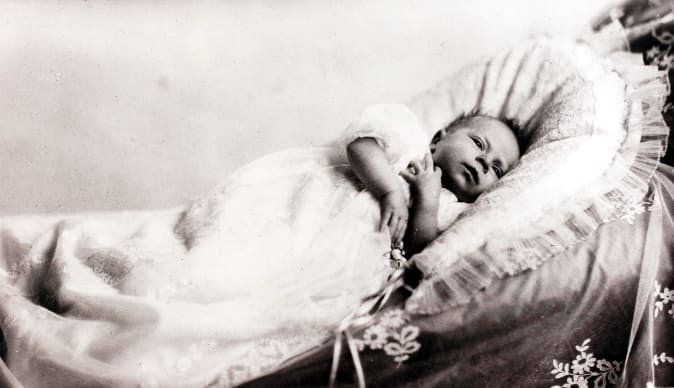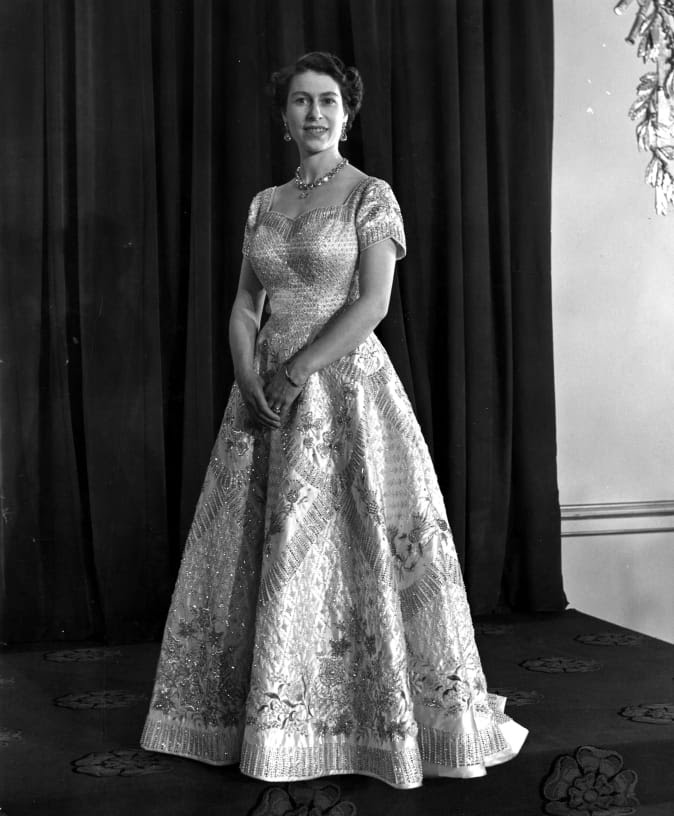Compiled by Morkporkpor Anku
Accra, Sept. 13, GNA – Queen Elizabeth II became Queen of the United Kingdom and other Commonwealth countries on February 6, 1952, and was crowned on June 2, 1953.
She was the mother of Prince Charles, heir to the throne.
As the longest-serving monarch in British history, she tried to make her reign more modern and sensitive to a changing public while maintaining traditions associated with the crown.
She died on September 8, 2022, at age 96, having reigned for 70 years.
Early Life
Queen Elizabeth II was born Princess Elizabeth Alexandra Mary on April 21, 1926, in London, to Prince Albert, Duke of York (later known as King George VI), and Elizabeth Bowes-Lyon.
At the time of her birth, it was not clear she would someday become the Queen of the UK.
The Queen, nicknamed Lilibet, got to enjoy the first decade of her life with all the privileges of being a royal without the pressures of being the heir apparent.
Elizabeth’s father and mother divided their time between a home in London and Royal Lodge, the family’s home on the grounds of Windsor Great Park.
Elizabeth and her younger sister Margaret were educated at home by tutors.
Academic courses included French, mathematics, and history, along with dancing, singing and art lessons.
With the outbreak of World War II in 1939, Elizabeth and her sister largely stayed out of London, having been relocated to Windsor Castle.
From there she made the first of her famous radio broadcasts in 1940, with a speech reassuring the children of Britain who had been evacuated from their homes and families.
The 14-year-old princess, showing her calm and firm personality, told them that, “… in the end, all will be well; for God will care for us and give us victory and peace.”
Elizabeth soon started taking on other public duties.
Appointed colonel-in-chief of the Grenadier Guards by her father, Elizabeth made her first public appearance inspecting the troops in 1942. She also began to accompany her parents on official visits within Britain.
In 1945, Elizabeth joined the Auxiliary Territorial Service to help in the war effort. She trained side-by-side with other British women to be an expert driver and mechanic.
While her volunteer work only lasted a few months, it offered Elizabeth a glimpse into a different, non-royal world.
She had another vivid experience outside of the monarchy when she and Margaret were allowed to mingle anonymously among the citizenry on Victory in Europe Day.
Ascension to the Crown
When Elizabeth’s grandfather George V died in 1936, his eldest son (Elizabeth’s uncle) became King Edward VIII. Edward, however, was in love with American divorcée Wallis Simpson and had to choose between the crown and his heart. In the end, Edward chose Simpson and abdicated the crown.
The event changed the course of her life, making her the heir presumptive to the British crown.
Her father was crowned King George VI in 1937, taking on the name George to emphasise continuity with his father. Her mother became Queen Elizabeth; on King George’s death in 1952, she became Queen Mother, and her daughter became Queen Elizabeth II.
Coronation
Elizabeth was crowned Queen Elizabeth II on June 2, 1953, in Westminster Abbey, at the age of 25.
Elizabeth assumed the responsibilities of the ruling monarch on February 6, 1952, when her father, King George VI, died. For the first time ever, the coronation ceremony was on television, allowing people from across the globe to witness the pomp and spectacle of the event.
Husband Prince Philip
Elizabeth married her distant cousin Philip Mountbatten (a surname adopted from his mother’s side) on November 20, 1947, at London’s Westminster Abbey.
Elizabeth first met Philip, son of Prince Andrew of Greece, when she was only 13. She was smitten with him from the start. The two kept in touch over the years and eventually fell in love.
They made an unusual pair. Elizabeth was quiet and reserved while Philip was boisterous and outspoken.
Her father, King George VI, was hesitant about the match because, while Mountbatten had ties to both the Danish and Greek royal families, he didn’t possess great wealth and was considered by some to have a rough personality.

At the time of their wedding, Great Britain was still recovering from the ravages of World War II, and Elizabeth collected clothing coupons to get fabric for her gown.
The family took on the name Windsor, a move pushed by her mother and Prime Minister Winston Churchill, which caused tension with her husband.
In 1960, she reversed course, issuing orders that her descendants who did not carry royal titles (or needed last names for legal purposes such as weddings) would use the surname Mountbatten-Windsor.
Over the years, Philip inspired numerous public relations headaches with his off-the-cuff, controversial comments and rumours of possible infidelities.
Philip died on April 9, 2021, at age 99.
Children
Elizabeth and Philip wasted no time in producing an heir: Son Charles was born in 1948, the year after their wedding, and daughter Anne arrived in 1950. Elizabeth had two more sons- Andrew and Edward in 1960 and 1964.
In 1969, she officially made Charles her successor by granting him the title of Prince of Wales. Hundreds of millions of people tuned in to see the ceremony on television.
In 1981, 32-year-old Charles married 19-year-old Diana Spencer (best known as Princess Diana), with later rumours surfacing that he was pressured into the marriage by his family.
The Queen and Africa
Elizabeth II visited Africa 21 times during her 70-year reign.
According to the British Royal Family’s website, the Queen had visited nearly every country in the Commonwealth, yet some oversea visits were more impactful than others. Her first trip was particularly important.
She maintained special ties with Britain’s former colonies and the members of the Commonwealth states in Africa.
From the beginning of her reign in Kenya to her memorable meetings with Kwame Nkrumah and Nelson Mandela, the Queen had a long-standing relationship with the African continent.
In 1961, she was pictured dancing with Kwame Nkrumah, who led the campaign for Ghana’s independence and became its first President.
A supporter of the recognition of African nationalism, she, along with the British government, encouraged the former colonies not only to become independent but to become republics.
Queen Elizabeth ll was one of many global leaders to take a firm stance against Apartheid in South Africa, a far cry from her father’s support of the Afrikaner regime. She notably disagreed with Margaret Thatcher’s opposition to sanctions against the Apartheid government, avoiding taking Britain’s side in the matter.
Queen Elizabeth II, amongst various other Heads of State, universally condemned the Apartheid regime at the 5th Commonwealth Heads of Government Summit hosted in Zambia in 1979 as the pressure from the international community began to grow.
The Queen would not return to South Africa until 1995, by which time democratic rule had been established under the leadership of Nelson Mandela. Alongside Nelson Mandela, she delivered an impassioned speech filled with optimism that encouraged the youth of South Africa to rebuild their nation.

No story of Queen Elizabeth II’s relationship with Africa would be complete if it did not mention her strained relations with Amin Dada.
The self-proclaimed “King of Scotland” and “Conqueror of the British Empire” seemed to enjoy teasing the Queen.
The Queen’s death sent millions into grief with tributes pouring in across the globe and nations flying flags at half-mast.
Monday night, tens of thousands of people were reported to have queued through the night in Edinburgh to view the coffin in St. Giles’ Cathedral.
The queues were said to have stretched well over a mile from the church.
Reports say the numbers turning out to view the Queen lying in state in London could dwarf that of Scotland.
The Queen’s body is expected to be flown to London today, Tuesday evening and on Wednesday, taken to Westminster Hall, where it will lie in state until the morning of the funeral, Monday, Sept. 19.
GNA